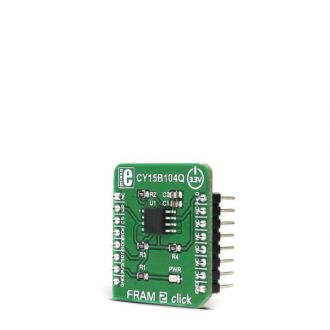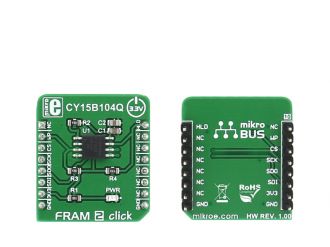
We strongly encourage users to use Package manager for sharing their code on Libstock website, because it boosts your efficiency and leaves the end user with no room for error. [more info]

Rating:
Author: MIKROE
Last Updated: 2018-03-13
Package Version: 1.0.0.1
mikroSDK Library: 1.0.0.0
Category: FRAM
Downloaded: 6861 times
Not followed.
License: MIT license
FRAM 2 click carries the CY15B104Q 4-Mbit (512K x 8 serial F-RAM. A ferroelectric random-access memory or F-RAM is non-volatile and performs reads and writes similar to a RAM. The memory is accessed using an industry-standard serial peripheral interface (SPI) bus.
Do you want to subscribe in order to receive notifications regarding "FRAM 2 click" changes.
Do you want to unsubscribe in order to stop receiving notifications regarding "FRAM 2 click" changes.
Do you want to report abuse regarding "FRAM 2 click".


Library Description
Key functions:
Examples Description
The application is composed of three sections:
void applicationTask()
{
mikrobus_logWrite("Writing MikroE to Fram memory, from address 0x015015:",
_LOG_LINE);
fram2_write (0x015015, &wrData[0], 9);
mikrobus_logWrite("Reading 9 bytes of Fram memory, from address 0x015015:",
_LOG_LINE);
fram2_read(0x015015,&rdData[0],9);
mikrobus_logWrite("Data read: ",_LOG_TEXT);
mikrobus_logWrite(rdData,_LOG_LINE);
Delay_ms(1000);
}
Other mikroE Libraries used in the example:
Additional notes and information
Depending on the development board you are using, you may need USB UART click, USB UART 2 click or RS232 click to connect to your PC, for development systems with no UART to USB interface available on the board. The terminal available in all MikroElektronika compilers, or any other terminal application of your choice, can be used to read the message.